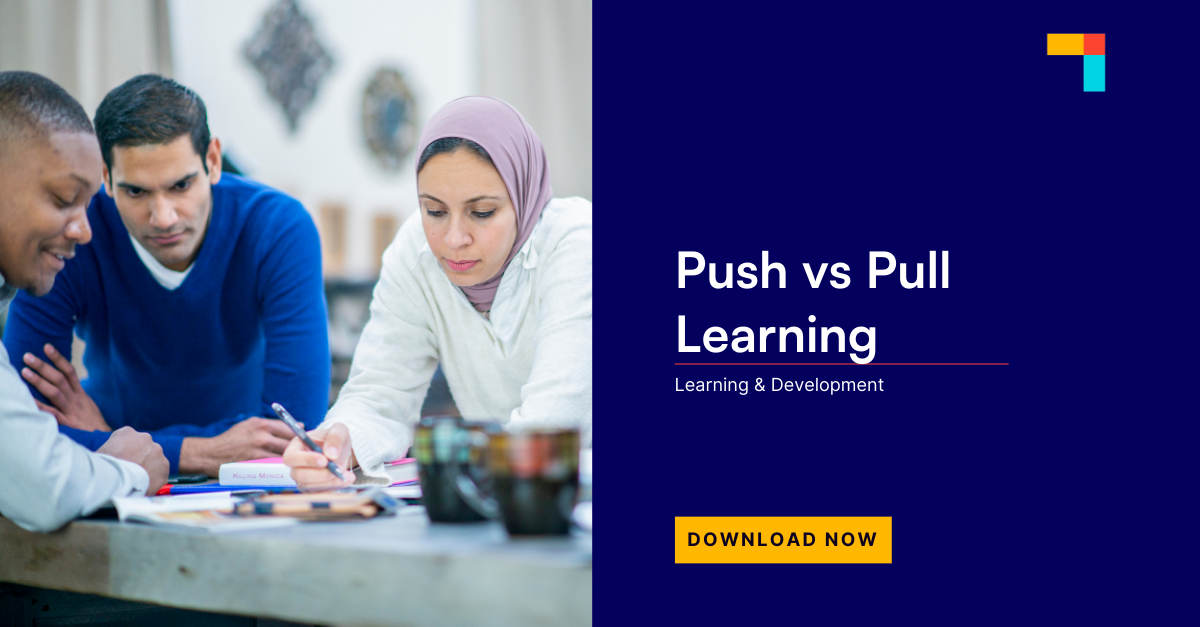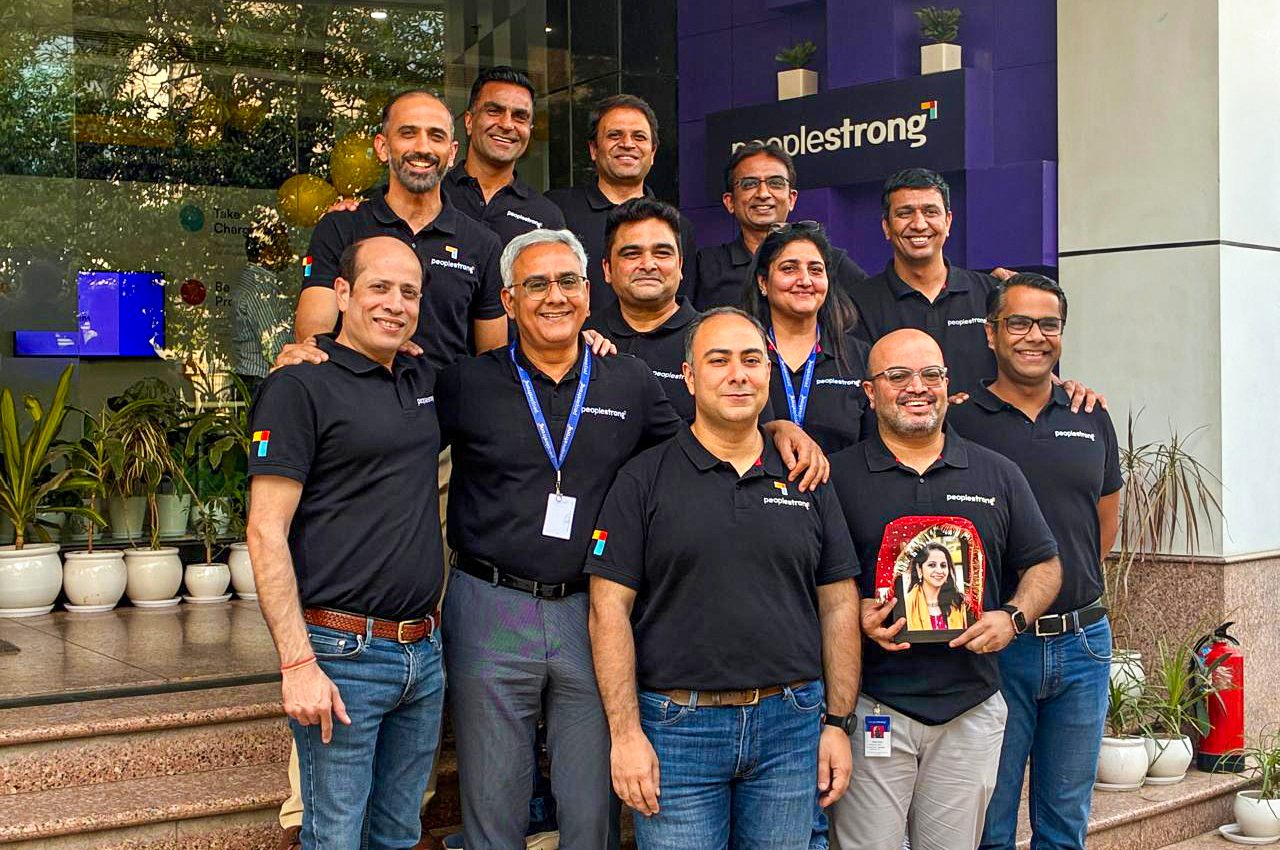In today’s business landscape, continuous learning is becoming increasingly important for companies looking to maintain their competitiveness. The rapidly evolving business environment has resulted in skills gaps that can only be addressed through ongoing learning and development initiatives.
By syncing learning aspirations with business objectives, companies can ensure that employees’ skills align with their needs, thereby driving productivity and profitability.
Investing in continuous learning for employees is a smart move for companies looking to stay competitive in the ever-changing business landscape.
To create a culture of continuous learning, enterprises must embrace advanced, tech-driven, personalized L&D solutions that resonate with employees. In addition, adopting a balance between “push” and “pull” learning approaches will enable employees to access relevant learning materials conveniently, promoting a self-directed learning culture.
Pull vs Push: Which One Should You Choose?
Pull and push learning are two distinct approaches to learning and development that companies can utilize to enhance the skills and knowledge of employees. Here are some key differences between pull and push learning:
- Definition: Push learning is a structured, top-down approach where learning is delivered to employees through traditional classroom-style training or e-learning modules. On the other hand, pull learning is a self-directed approach where employees access learning resources conveniently, such as online courses, videos, podcasts, and articles.
- Flexibility: Push learning offers less flexibility, as it follows a predetermined curriculum with little room for customization. Pull learning is more flexible, allowing employees to choose the learning resources that best align with their interests and needs.
- Engagement: Pull learning is generally more engaging as employees have more control over their learning experience. They can access learning resources of interest and then learn at their own pace, resulting in increased motivation and engagement.
- Cost-effectiveness: Pull learning can be more cost-effective, eliminating the need for expensive training sessions or hiring external trainers. Instead, organizations could provide employees access to online courses, webinars, and other readily available resources at a lower cost.
- Effectiveness: While both approaches have benefits, pull learning is more effective with respect to knowledge retention and application. Employees are more likely to remember and apply what they have learned when choosing the learning resources rather than being forced to learn specific topics.
| Parameters | Comparison |
| Definition | Push learning is structured and top-down, while pull learning is self-directed and flexible. |
| Flexibility | Push learning offers less flexibility, while pull learning allows employees to choose their learning resources. |
| Engagement | Pull learning is generally more engaging, motivating employees to learn at their own pace. |
| Cost-effectiveness | Pull learning is more cost-effective, eliminating the need for expensive training sessions or external trainers. |
| Effectiveness | Pull learning is more effective regarding knowledge retention and application. |
Establishing an Effective Learning Framework
Establishing an effective learning framework for an enterprise is essential to ensure employees’ continuous growth and development. This strategy also helps align with the company’s goals and objectives. Here are some actionable insights that will help with creating an effective learning framework:
- Balance Push and Pull Learning: The learning framework should incorporate both push and pull learning methods to cater to the company’s and employees’ needs. Push learning emphasizes the essential skilling needs of the enterprise, while pull learning revolves around the growth and development needs of the employee.
- Identify the Target Learner Group: Identifying potential learners within the organization is crucial to engaging employees and ensuring budgeted returns on investment. In addition, this helps in creating a tailored learning plan that caters to employees’ specific needs, which can contribute to business value.
- Differentiate Learning Needs: An effective learning framework should differentiate learning needs based on different business and employee lifecycle stages. For instance, front-line managers may require more mandatory technical training, while senior executives may opt for voluntary career development training.
- Define Career Paths: Clear and defined career paths for employees can foster a pull learning culture, as employees will strive to develop skills and competencies required to advance up the corporate ladder. This can also help in creating a more engaged and motivated workforce.
- Measure Effectiveness: The effectiveness of the learning framework should be measured through regular feedback and assessment of employees’ learning progress. This can help identify gaps and modify the learning plan to ensure continuous improvement.
Summary
|
Key Aspects for Implementation of Continuous Learning Platforms
When establishing a learning framework, it’s important to remember that learning is a cost to the organization, so it’s crucial to identify the internal talent pool that would benefit the most from the L&D programs. This helps ensure that the company generates the expected returns on investment from the training initiatives.
Simply providing access to digital learning platforms and open-ended learning may not be enough to build capabilities within the workforce. Employees must see personal benefits and growth opportunities in acquiring the skills and capabilities the employer is endorsing.
This means that the learning framework should be designed to align with employees’ personal and career development goals while also contributing to the organization’s success.
By keeping these aspects in mind, companies can establish a learning framework that effectively meets the enterprise’s and its employees’ needs, promoting continuous growth and development while generating the expected returns on investment.
An effective learning framework should blend both push and pull learning, catering to the organisation’s and employees’ needs while promoting continuous growth and development. It should be tailored to the workforce’s specific needs, and its effectiveness should be regularly assessed to ensure that it contributes to the company’s success.
To learn more about the views of prominent business leaders on the need for continuous learning systems, check out this eBook on Managing Talent and Compensation in the New Age.
Check out PeopleStrong
At PeopleStrong we work with organizations across Asia-Pacific to implement cutting-edge upskilling tactics for their workforce.
With our experts, you can now implement AI-powered personalised learning paths, tightly coupled with your organisational goals.
Our AI-powered training recommendations match learner’s skill analysis, interest, career path, and language to create an individual development plan (IDP) that equips them for success.
Check out the learning platform designed to support high-performance teams












